Meet the Fluffy, Funky and Fabulous Native Bees That Call the U.S. Home
Spring has finally arrived in the U.S., bringing its bright spectacle of budding trees and migrating birds, along with more subtle but equally important changes—among them, the first emergence of native bees.
But “native bees” doesn’t actually include the insect most of us picture upon hearing the word “bee.” That yellow-and-black-striped, hive-living, honey-making critter—formally Apis mellifera—hails from Europe. Farmers rely on these tiny imports as, essentially, livestock animals that pollinate food crops and produce honey. But their wild, native counterparts are something completely different.
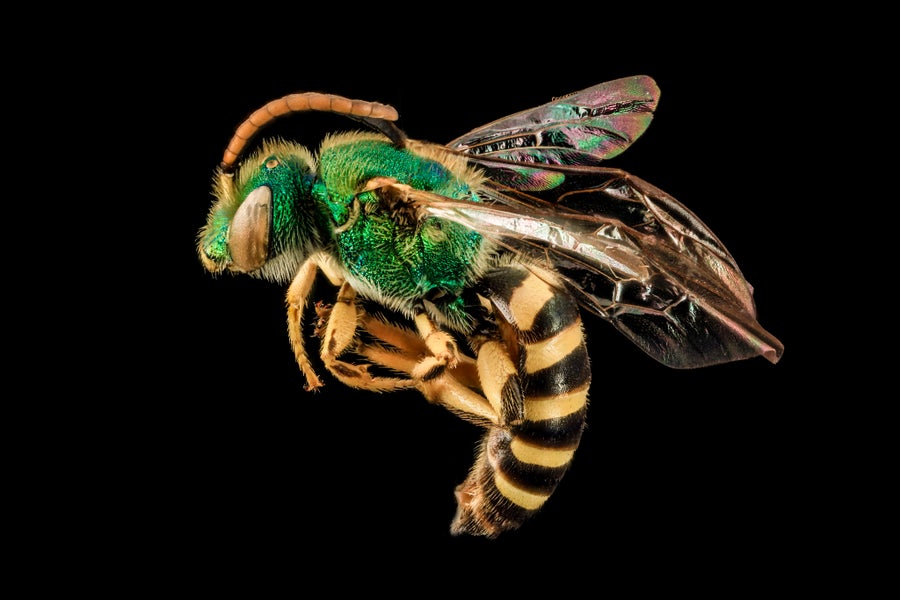
“Take the majority of what you know about honeybees and throw it away,” says Sydney Shumar, a biologist and manager of the U.S. Geological Survey’s Bee Lab. “It does not apply to our native bee friends.” To celebrate spring, Scientific American spoke with Shumar about North American native bee species’ variety, differences from honeybees and importance in their ecosystem.
[An edited transcript of the interview follows.]
Do I have this right that there are more than 4,000 native bee species in the U.S.? How is that number so big?
The reason why there are so many native bees is you have all these different little things evolving to pollinate groups or species of plants. So they all have very different characteristics. When you look at pictures of our native bees, they look totally different than a honeybee, and you have huge ranges of color, size, how they collect pollen and how they nest.

What are they like, and how do they live?
There are no native bees in North America that live in a hive or produce honey. Most of them live in very small family units, or you could think of it as more like an apartment where you might have families aggregating together.
“If you go anywhere in the United States, you are bound to find some native bees.” —Sydney Shumar, biologist
None of them produce honey; none of them produce wax; none of them make big structures like you would think of with a honeybee. Some are stem-nesting; most of them are ground-nesting, so when you’re walking around in the winter, you are walking on top of millions of ground-nesting bees that are just laying low until it’s time for them to come out with spring.
Is this true even in cities? Do they have preferences or types of ground that they need?
A lot of our native bees are specialists, so they do like a particular type of soil; we have a couple that particularly like sand. In cities and more urban areas, you have a lot of impervious surfaces, so that is going to make it harder for them. But if you have loose soil, if you have native plants, you’re most likely going to find native bees.
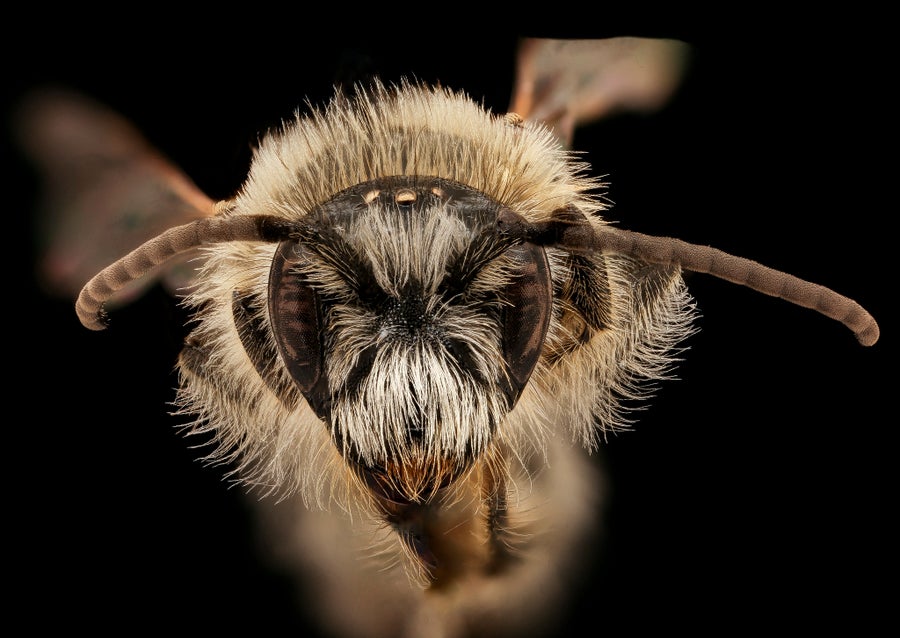
Are there any U.S. ecosystems that don’t have native bees, such as deserts or something?
No, we worked on a project on xeric habitat, and when you think of xeric, you think of dry; you think of nothing blooming, just arid—and the researchers caught hundreds—hundreds—of bees. If you go anywhere in the United States, you are bound to find some native bees.
Are there any species or groups that you find particularly cool?
Besides all of them? I am very fond of this group that’s called squash bees. They’re medium-sized; they’re very cute and fluffy. But as you’d guess, they are squash specialists. They come out super early in the morning; you have to get there at first light. And if you have squash plants, then you most likely have them. The scientific name of the most widespread species is Peponapis pruinosa, and you’ll find them just relaxing in the big squash bloom, usually early in the morning.
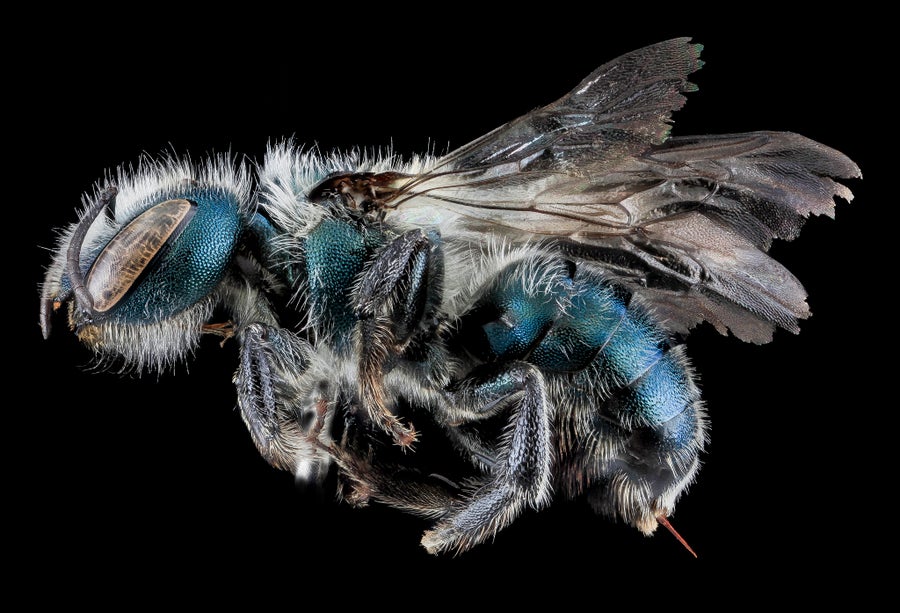
You mentioned that ground-nesting bees are underfoot all winter. What does a year in the life of a native bee look like?
With more than 4,000 species, they are not all coming out at the same time. You have some that are very early in the season, when the first spring ephemerals [long-lived plants that are only briefly active above ground each year] come out. In Maryland, that’s typically around April. And then as you get the different blooms, you have this continuing crescendo of bees coming out.
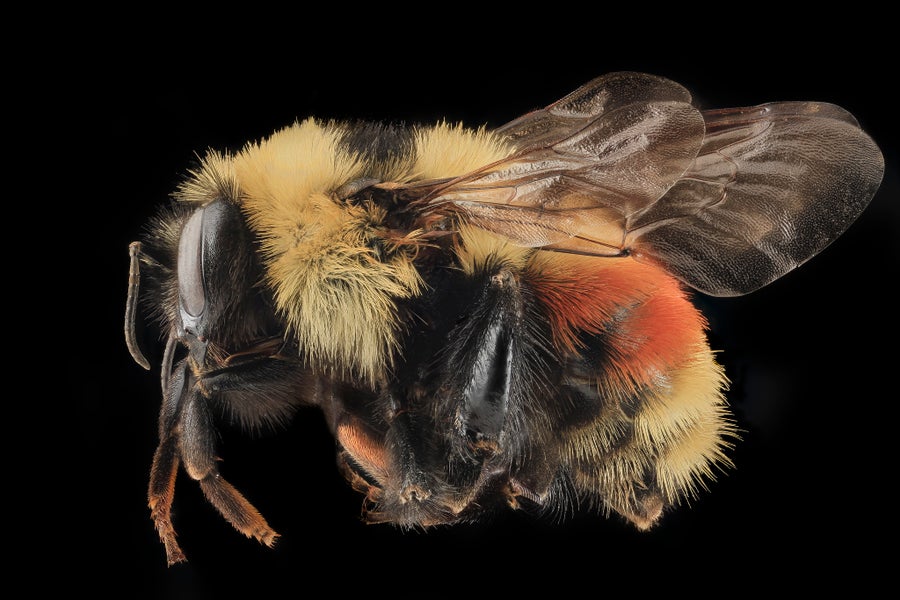
Typically you’re only seeing a really small snapshot of a bee’s life. For the majority of the time, bees are existing as eggs and as little larvae, and then they’re in this weird grub form underground. And then they emerge as what we think of as bees, and that’s where they are finding food, finding a mate and then just continuing that cycle over again.
Typically a bee is only out for maybe a month or two. They are kind of fragile—they have very thin wings; they have very thin antennae—and so when you catch one, you can kind of tell if it’s been out for a little while. It looks a little battered, and you can tell it’s been flying around and bumping into things and damaging its wings. Or if it looks very pristine, then you can kind of guess that it’s recently emerged or it’s a little bit fresher than some of the other bees that are out there.
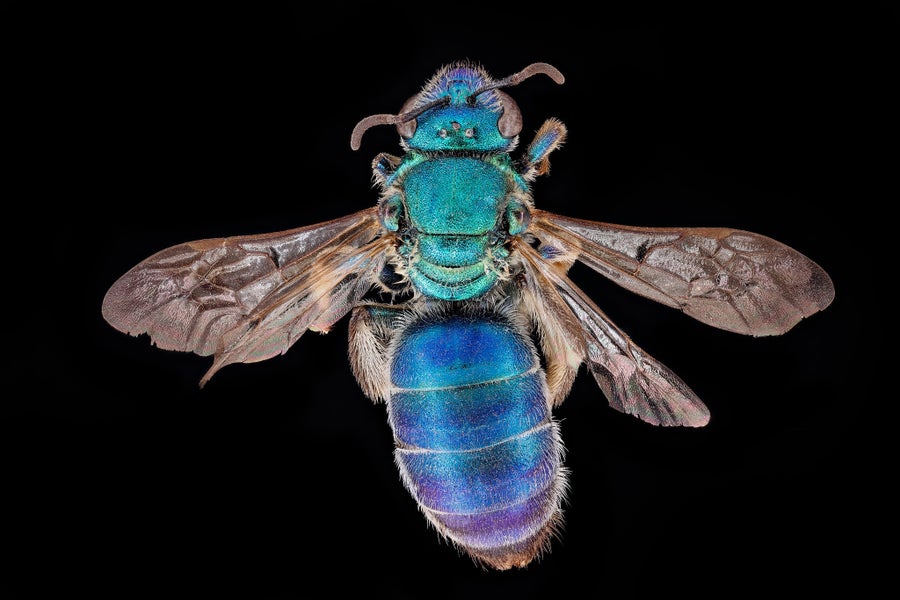
The larvae and grub phases—do those look really different from an adult?
They look more grublike, more caterpillarlike. If you were to see one, you definitely would not guess that it’s a bee larva. A lot of our native bees are very tiny—but they’re not baby bees. Baby bees actually don’t look anything like the bees that we think of. They don’t have the three-segmented body; they don’t have six legs; they don’t have wings; they don’t have antennae.
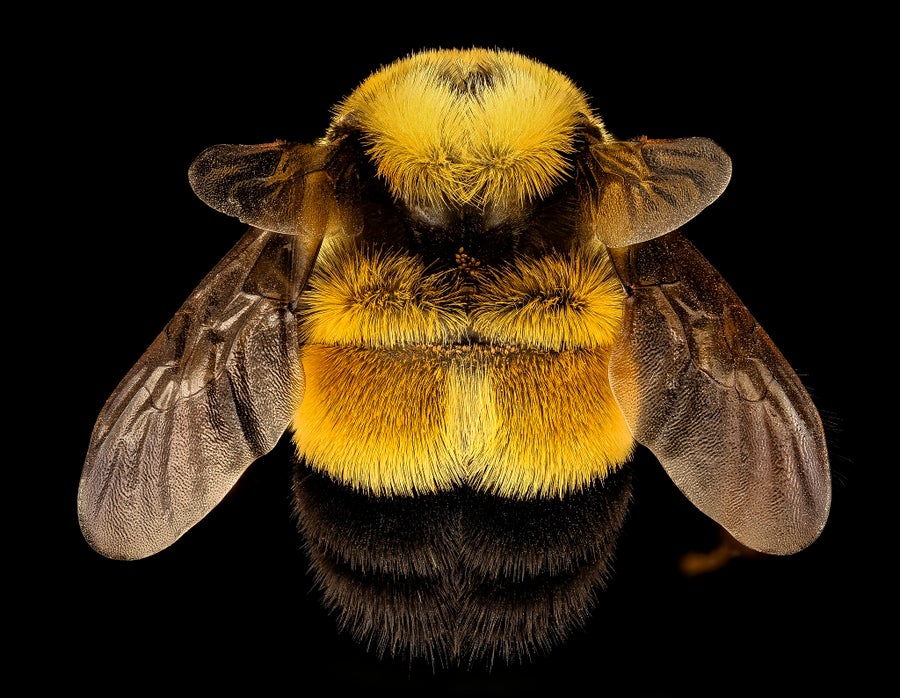
With honeybees, we only see females out and about. Is that the same with native bees?
With native bees, there are very seldom queens—bumblebees are the exception.
But there are males and females. You do typically find more females than males, but you don’t have the queens or [male] drones or those differences unless you are talking about the bumblebees. In general, most females and males do look a little bit different within the same species. Under the microscope, for males, you typically have a little bit more coloration in the face or a little bit more coloration in general. And then they typically have longer antennae compared to females. And then the biggest difference of all is, even in native bees, females have a stinger and males do not.
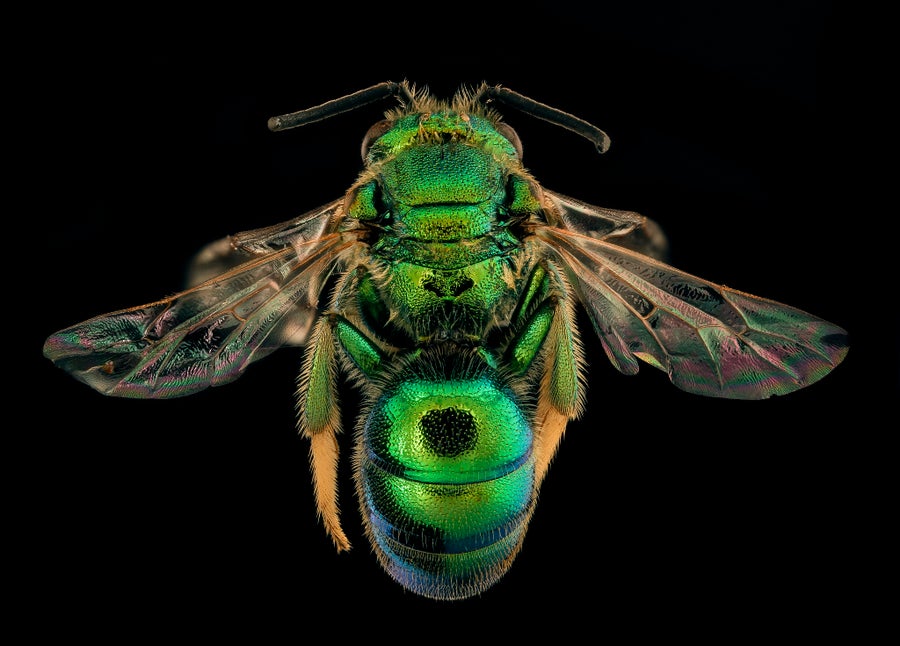
Can humans get stung by them, then?
Technically yes. Now, the stinger is completely different than a honeybee’s. It is not a barbed stinger, which means, one, it’s not as painful, and two, the native bee would not die after you get stung by it. That’s the mechanism that kills the honeybee: the barbed stinger gets embedded. [When the honeybee flies away, the stinger detaches, and the bee dies.]
A lot of the time, if people are stung by native bees, it’s because they were handling them—actively netting them or trying to grab them. A lot of times that happens with our bigger native bees: bumblebees, carpenter bees, things of that size. Everything else, they have such minuscule stingers that you’re lucky if it even breaks the skin, much less gets through clothing.
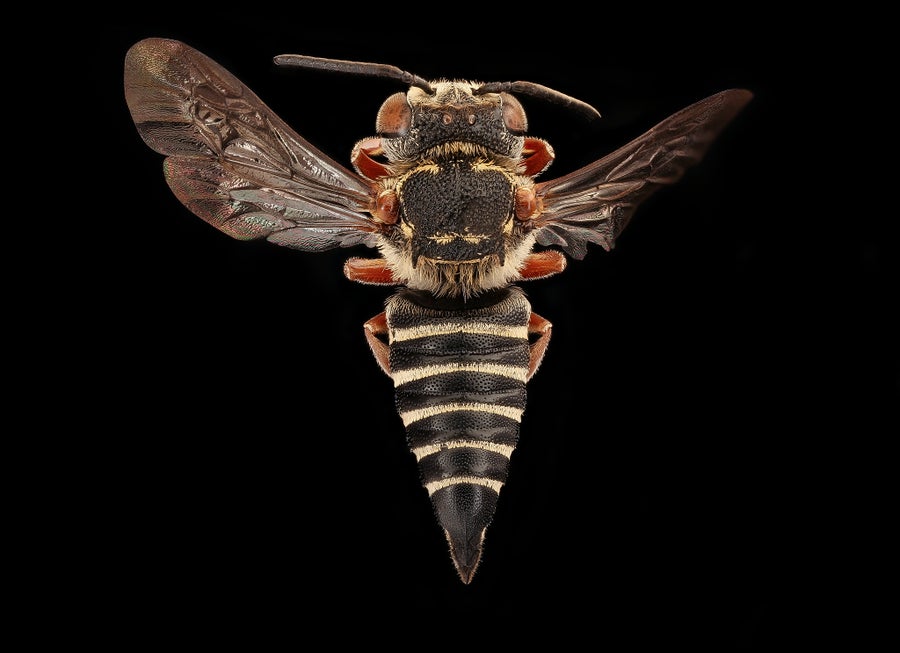
Also, they’re not very territorial. The main reason why honeybees would sting you is because you’re encroaching on the hive or they are resource-guarding honey or flowers. Because native bees don’t really have a hive to protect and they also don’t resource guard, you’re a lot less likely to get in their way.
What do we know about how native bees are doing?
In general, native bee species are declining—and that is a result of habitat loss, use of pesticides, more rural areas becoming urbanized, more impervious surfaces, and the like.
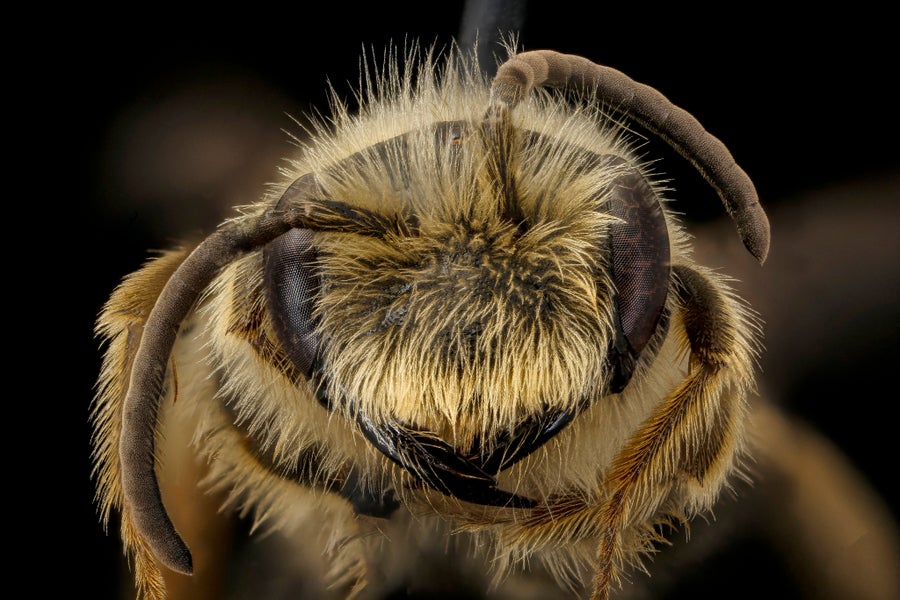
If someone wants to start paying more attention to native bees, how easy is it to start learning to identify native bees in their area?
Bumblebees are the easiest to get started with, and there’s tons of resources online. They’re bigger, and typically how you’re identifying them is based off the coloration of the hair on the back of the bee. So if one of them is just sitting on a flower, you can go up to it and with decent certainty know which one it is, depending on your region. In terms of the other groups, it’s hard. You definitely need a microscope and access to a reference collection where someone who is an expert has already identified some groups.
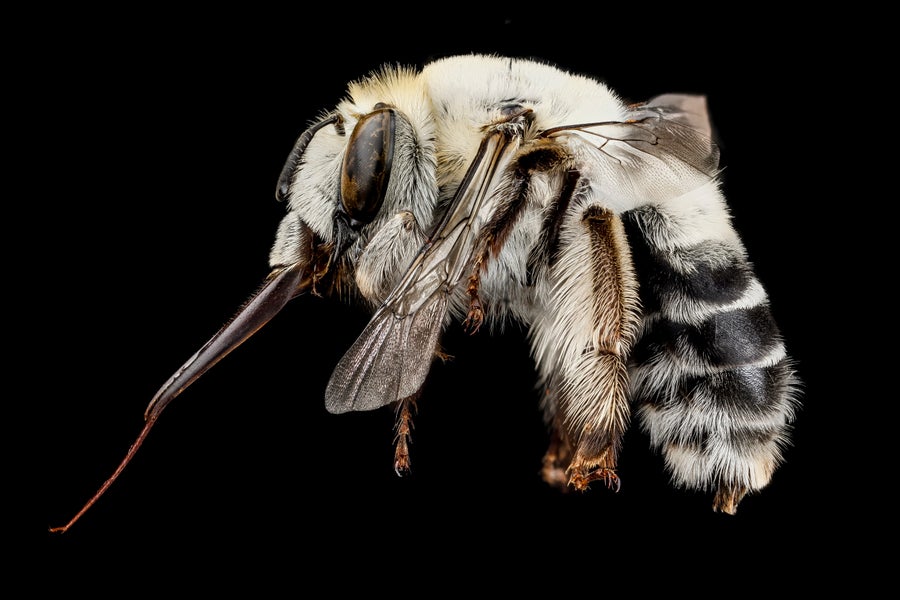
Is there anything people can do to help native bees around them?
The most well-researched and documented way of trying to introduce native bees to your area is to plant their habitat and plant their food source. It doesn’t have to be anything crazy. Native bees are tiny—they’re really small. So even if you have an apartment, if you have a little garden area or if you have a pot, put some native plants in there, and I think you’ll be astounded at what you wind up seeing coming to visit.
댓글
댓글 쓰기